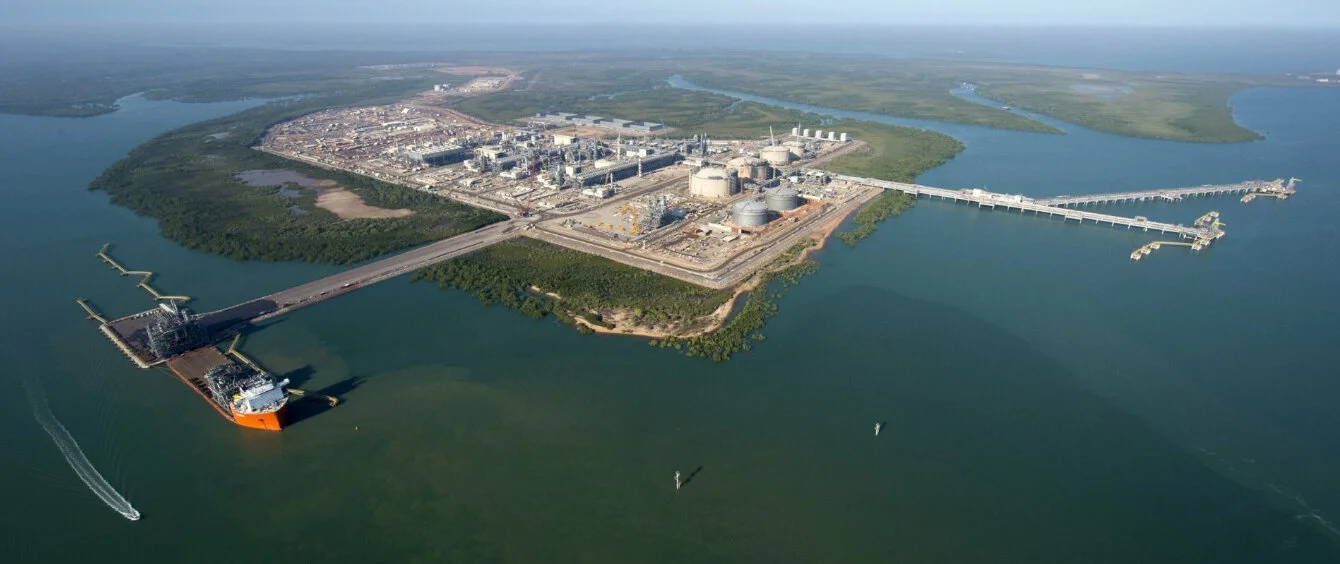On March 9, Anglo-Dutch oil major Shell took receipt from Russia’s Gazprom of what the companies said was the first carbon neutral LNG cargo to be delivered into Europe. The cargo was unloaded at the Dragon LNG terminal in the UK. The delivery highlights a growing preference on the part of buyers for low carbon LNG. A decision last year by French energy company Engie to delay a major offtake agreement with US LNG developer NextDecade was also indicative of the trend. Engie said it would postpone a decision while it made a deeper examination of NextDecade’s proposed Rio Grande LNG facility.
Emissions offsets
LNG producers are certainly looking for ways to reduce the environmental impact of the fuel. In October, French oil and gas major Total announced that it had delivered its first carbon neutral shipment of LNG from its Ichthys LNG plant in Australia.
As with the Shell/Gazprom cargo, this was achieved by using offsets, in this case providing financing for the Hebei Guyuan Wind Power project in China and the Kariba REDD+ Forest Protection Project in Zimbabwe. These investments earned verified carbon standards emissions certificates equal to the carbon footprint of the LNG cargo.
Demand on the rise
LNG is super cooled natural gas, which is methane (CH4), a potent greenhouse gas (GHG) in its own right. It is cooled to increase its density to allow transportation economically from areas with large gas resources to regions with gas demand, but only limited domestic production or pipeline import capacity.
Europe, which saw LNG imports soar in 2018 and 2019, is a prime example. Imported LNG from around the world can be used to displace coal-fired generation, reducing GHG emissions at the point of combustion. Combined Cycle Gas Turbines emit roughly half the GHGs of a coal-fired plant and are flexible generators able to ramp generation up and down to mitigate the variability of renewable technologies such as solar and wind power.
Overview of the Ichtys LNG project
Lifecycle emissions
However, the full lifecycle GHG emissions of LNG start at the point of gas production. A study by the Sustainable Gas Institute (SGI), Methane and CO2 Emissions from the Natural Gas Supply Chain, found that when full lifecycle emissions for natural gas used for power generation were taken into account the range of GHG emissions was very large – between 14 to 302 grams of CO2 equivalent per kWh of electricity generated. In other words, some sources of gas have substantially lower emissions profiles than others.
Before reaching a gas-fired power plant, the main sources of emissions are from well completions, liquids unloading, pneumatic devices and compressors, the study said. The study estimated that total natural gas supply chain emissions should lie within a range of 2.7g-32.8gCO₂e per megajoule, with a median value of about 13. However, LNG requires liquefaction, transportation and then regasification, all of which raises the median value to about 18, with the liquefaction process contributing the largest element of the increase in emissions.
Potential solutions
A key target for supply chain emissions reductions are the compressors used to liquify natural gas. These use a large amount of energy and have traditionally been gas-fired – an obvious solution given that the gas is already on site. Raising the efficiency of a compressor, for example by improving the aerodynamic flow of the gas, reduces the energy input, emissions and increases the LNG output.
However, some developers have gone further, intending to use all-electric motor drives to power compressors, pumps and fans. In July 2019, US oil major Chevron estimated that the use of electric drives at its proposed Kitimat LNG plant in Canada would reduce the plant’s GHG emissions to less than 0.1 metric tons of carbon equivalent for every ton of LNG produced. Likewise, the Shell-led Canada LNG project will also use electric drives, sourcing the majority of the electricity required from local hydro generation. This should allow it to achieve an intensity of 0.15 tons/CO₂e per ton of LNG, below the 0.16 threshold set by British Columbia, the Canadian province where the plant is being developed. Any higher and the project would have to pay additional carbon taxes.
Meanwhile, NextDecade has announced that it is considering plans which would allow it to reduce GHG emissions from its Rio Grande project by about 90% and that it was looking at options to mitigate the remaining 10%. The key technology proposed is carbon capture and storage (CCS). Qatar Petroleum is also heading down the CCS route. It announced in Feburary that its North Field Expansion project would incorporate CCS and would also source renewable eletricity from Qatar’s national grid, as well as from its own solar power installations.
The large range of emissions profiles identified by the SGI report shows that many LNG projects have scope to reduce emissions. At the same time, LNG buyers in Europe operate within countries which have adopted ever more ambitious climate change targets. This should create demand for lower carbon LNG, which will incentivise producers to implement best practices and make a low emissions profile a key selling point for their product.
